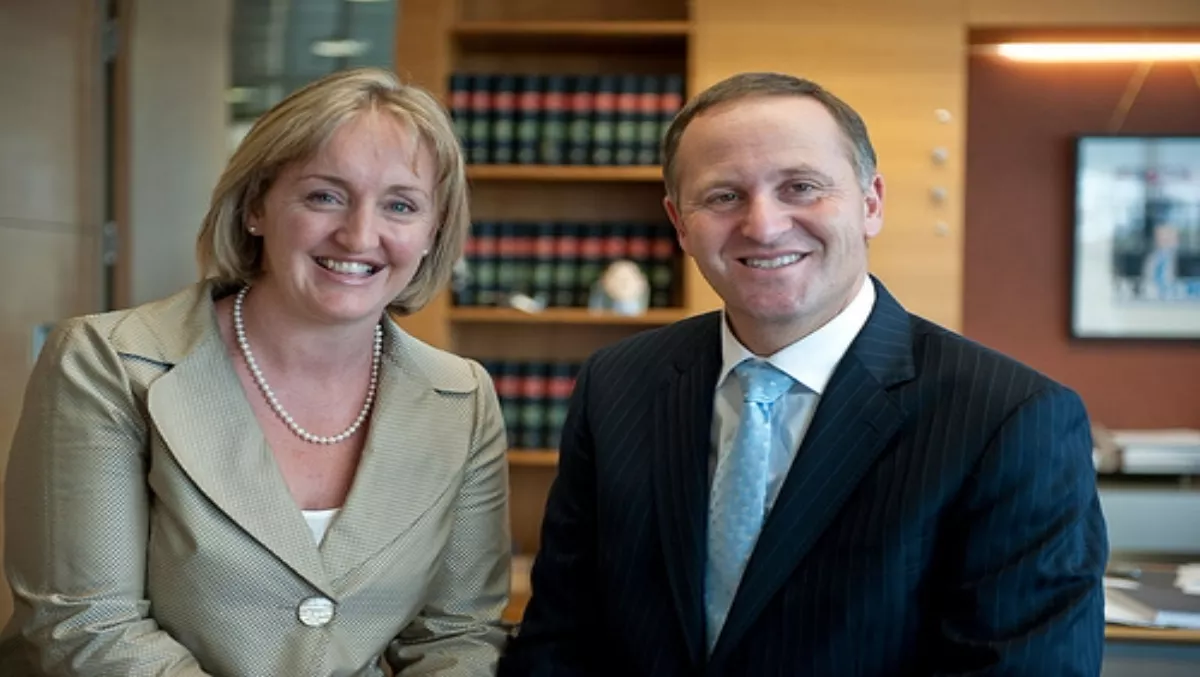
Adams approves copper prices to underpin fibre plans
The government is proposing to cut through the regulatory mire over price-setting for fast broadband services by using the prices tendered by participants in its ultra-fast broadband rollout project instead of complex international benchmarks.
Communications and Information Technology Minister Amy Adams announced the monthly regulated price for access wholesale fibre would sit in a range between $37.50 and $42.50, assuming proposals in a discussion document released today are adopted.
That range is slightly below the $42.50 monthly charge nominated by Mark Ratcliffe, the chief executive of fibre network builder and copper network owner Chorus, which has complained bitterly that if copper network pricing is pitched too low, it will kill customer appetite for fibre and make the service uncommercial.
Adams pitched the government's new proposals as a "once-in-a-many generation" transition to a new technology, requiring a balance between the lowest cost copper network alternatives and the policy aim of getting New Zealanders onto a modern fast, fibre network as quickly as possible.
"We must ensure they (consumers) have access to high quality, competitively-priced services, based on world-leading technologies," she said in a presentation launching the discussion document at Parliament.
Submissions are due by Sept. 13, with decisions by the end of the year and, if necessary, legislation introduced in early 2014.
Adams has been forced to accelerate a review of telecommunications regulation that was to have started in 2016 after the competition watchdog agency, the Commerce Commission, surprised Ministers by recommending far lower prices for access to the ageing copper network than expected.
"If we do not have the regulatory settings right to enable infrastructure providers to invest in new replacement technology, we run the real risk that our consumers will not have access to those technologies or not have access to them for some delayed period of time," Adams said.
"I do not think that can be viewed as being in the long term best interests of end users."
The first phase of the review "will focus on the fundamental relationship between pricing for the legacy copper network and pricing for the new fibre network during the transition period until 2020."
The government continued to believe the price of copper access should be "based on long run, forward-looking costs using benchmarking or cost models which can be very time-consuming" and was particularly difficult during a transition from an old to a new technology.
"Rather than using these complex series of calculations based on a limited pool of international benchmarks, or on contentious and complex cost modelling, the discussion documents points out that we already have a reliable estimate of the costs of building a modern equivalent to the copper network in New Zealand, as a result of the competitive tender process for the UFB roll-out," said Adams.
"The discussion document comes to the preliminary conclusion that the UFB tender process gives us the best indicator of the cost of a replacement fixed network, and so the competitively-tested entry level prices for fibre should be taken as a proxy for copper access."
That conclusion is likely to cheer Chorus, which has seen foreign investors drop from 75 percent of its register after it was separated from Telecom in late 2011 to closer to 40 percent today, reflecting a string of regulatory uncertainties and surprises that discouraged investors.
The Chorus share price dropped to a low of $2.26 in June after listing in November 2011 at $2.94. The shares firmed in trading yesterday to close at $2.90, ahead of this morning's announcement.
Adams stressed the price of copper network services would drop anyway, since the current regulated rate of $44.98 is higher than the entry-level fibre price range under the three scenarios outlined in the discussion document.
Key questions for the consultation process to answer are where the copper price sit within the wholesale fibre price range between $37.50 and $42.50 a month and whether the Commerce Commission or the government should set that price.
Finally, it would answer how to split the cost between the components of copper pricing: unbundled copper local loop services and unbundled bit access.
The discussion document also canvasses the issues that could be included in the next phases of telecommunications regulation review for the sector after 2020, when the UFB network will have been completed.
Issues included whether an alternative framework would be preferable for access to bottleneck facilities after 2020 by, for example relying on generic price control under Part 4 of the Commerce Act; and whether issues such as convergence and content may require new regulation.
By Pattrick Smellie - BusinessDesk

